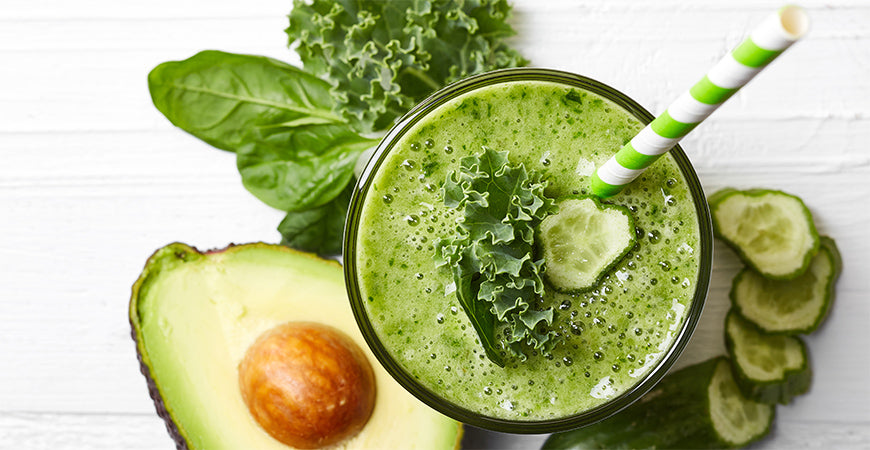on all US orders over $99
on all US orders over $99

Greens powders are a great solution to boost your vegetable intake, easy to add to water or smoothies, and the health benefits are amazing: purify the blood, oxygenate cells, increase energy, balance pH, help with cell repair, protect from free radical damage, reduce inflammation, support the immune system, help with memory, and so much more.
But is your greens powder really good for you? Some have added sugars or are contaminated with bacteria and heavy metals. Let’s break down the 5 most common questions about the healthiest green powders and help you find the best quality for your health goals.
You work hard to maintain your gluten free diet, and it’s helping your health issues. But you read the label on your favorite greens formula and find wheat and barley grasses, raising concerns there may be gluten. Rest easy. According to both the US Department of Agriculture and the American Association of Cereal Chemists, gluten is found only in the seed kernel, which is what we make flour from, and not in the stem and leaves, also known as the “grass.” So a properly processed greens formula contains only the young grasses before the seed kernel even forms, and not the gluten.
These grasses are potent antioxidants, rich in a wide variety of vitamins and minerals. Their anti-inflammatory enzymes support the immune system, while the chlorophyll cleanses and oxygenates the blood. They support adrenals, help remove heavy metals and even protect against radiation exposure.
There are many varieties of greens on the market, and many are flavored to mask the taste of the greens for non-vegetable lovers. But a close inspection of the flavorings usually reveals hidden sources of fructose, like concentrated fruit juices. These fruit juices contribute to blood sugar issues, the inability to lose weight, non-alcoholic fatty liver disease, and high LDL cholesterol. The best formulas are unsweetened and contain just greens.
For a great tasting smoothie, try our recipe inspired by Ann Louise Gittleman’s Fat Flush Smoothie from her Fat Flush Plan book:
Blend the water, powders and fruit until smooth, then add the rest of the ingredients and blend again.
Most greens available on the shelf today contain kelp or spirulina. These sea vegetables are not only high in minerals, they are also contaminated with radioactive residues, bacteria and heavy metals like lead, cadmium, mercury, arsenic and aluminum. Kelp is one of the cheapest greens available, sold in bulk for cattle feed, and often the very same kelp is bottled and sold to you in supplement form. Avoid greens with sea vegetables that are wild harvested if you want to avoid heavy metal exposure.
A Note about Chlorella: this sea vegetable is now available hydroponically grown, in controlled pools with clean water. Chlorella is a good choice in your greens formula when hydroponically grown and its cell wall is cracked for better absorption.
Label reading is your best tool to find good quality greens. First, make sure there are no fillers and no additives in the ingredients – just the greens. Look at the Total Carbohydrate section on the label, and more specifically the Sugars listed. If it’s more than 1 or 2 grams of sugar per serving, there are added sugars hiding in there and should be avoided.
Second, make sure your greens are organic and non-GMO. Greens powders are more concentrated than the whole vegetables, which means any pesticides like RoundUp or other chemicals are also more concentrated. Organic and non-GMO are the cleanest greens available and the best choice for quality. Just a reminder, hydroponically grown chlorella is the only sea vegetable that should be in the ingredients. Avoid kelp and spirulina and the other sea vegetables to avoid heavy metal contamination.
The best-known super foods in greens powders are wheat grass, barley grass, kale, and spinach. Other good additions include sulfur-rich cancer-fighting broccoli sprouts, parsley for fluid balance and healthy homocysteine levels, chlorella for mold and heavy metal detox, celery for gout and digestive health, grasses like oat and alfalfa for wound healing and healthy blood sugar, and collard greens for powerful immune support. These are the 11 organic, non-GMO greens in UNI KEY’s Daily Greens Formula, which we believe is the best greens formula on the market.
Leave a comment